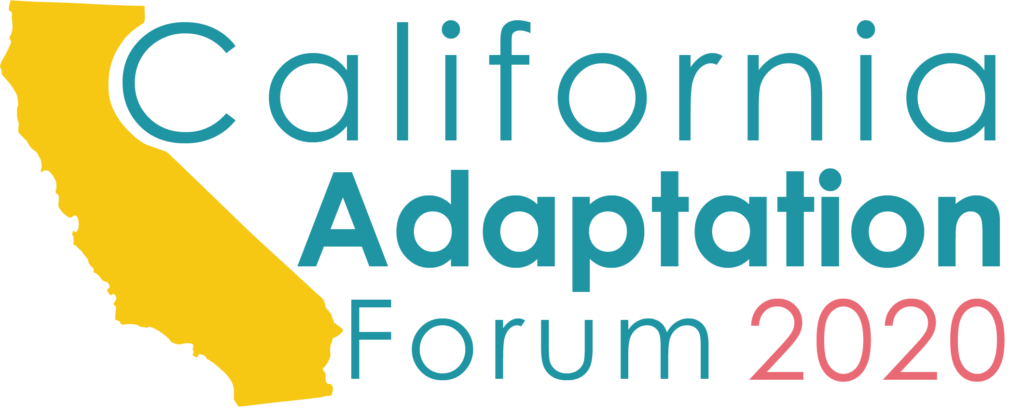Originally posted on Fire Adapted Communities Learning Network
The Karuk Tribe’s Traditional Ecological Knowledge (TEK) and belief systems are constructed and preserved in the form of stories, practices, performances and ongoing interactions with the natural world. Among such rituals include our World Renewal Ceremonies, which the Karuk Tribe has practiced since time immemorial. These ceremonies have been passed down for millennia, and are a key part of our local communities’ social fabric. They link human practices like fishing, hunting and gathering to responsibility. They also ceremonially align our culture with ecosystem process and function. In our worldview, cultural resources have a life, as do the people using them. Each life deserves consideration when planning projects, including fire adaptation projects.
The Western Klamath Restoration Partnership (Partnership), a forest restoration collaborative that the Karuk Tribe co-leads, has decided to reference these ceremonies as a guidepost while identifying which resources and species to prioritize when making fire management plans and decisions.
Integrating World Renewal Ceremonies into Focal Species Selection
Involving all aspects of TEK in collaborative endeavors would be too complex, at least initially, especially when involving communities that lack a true understanding of a specific, place-based indigenous culture. To begin formulating a story of humans re-accepting their responsibility regarding fire management, we started with a narrow focus of just five species, framed within their indigenous contexts. With time, we hope to prioritize additional species.
Willow, one of the Partnership’s focal species, was prioritized for three reasons. First, Karuk people traditionally use willow to ignite fire. Second, it provides a stable environment for the river mussel; Karuk women traditionally use these mussels’ shells to carry a coal, as part of their responsibility to use controlled burns to care for the plants. Third, healthy (e.g., regularly burned) willows and other plants yield high-quality basket materials. The more our management and usage provide benefits to the willow and their associated species, the better our outcomes will be. It is for these reasons that the willow is one of our focal species.

In Karuk culture, the Pacific fisher is the regalia species used in the World Renewal Ceremonies. Ecologically, the fisher has the same habitat as the northern spotted owl (NSO). Though owls (in general) are known as messengers of sickness and death within Karuk culture, only two species are identified by name in our language, neither of which is the NSO. Nonetheless, because the NSO and the Pacific fisher require the same habitat, and the Pacific fisher is of great significance to the Karuk people, the Partnership prioritizes projects that favor these two species. For example, the Partnership is advancing manual and mechanical thinning, as well as prescribed fire projects, that retain dense pockets of trees, create patches of open space, and enhance the foraging, resting, nesting, roosting and denning habitats that these species prefer.

Roosevelt elk were also identified as a focal species. Elk represent the traditional male responsibility regarding fire, as men traditionally carry a burning ember in an elk horn to ignite controlled burns that specifically intend to benefit animals. By integrating the needs of large ungulates and associated species, we not only promote important habitats, but we begin to consider and incorporate larger, landscape-scale fire processes. The Partnership, therefore, prioritizes fire adaptation projects that promote elk habitat, such as meadow and glade restoration.

The Pacific giant salamander, an animal associated with riparian areas, is treated with the utmost respect in our culture. This species has its own prayer in Karuk World Renewal Ceremonies, and it is considered to be the sacred water purifier. It has terrestrial and aquatic components to its lifecycle, so projects that prevent massive erosion (i.e., catastrophic wildfire), reduce the use of accelerants in riparian areas, and retain large trees and downed logs (all without interrupting the reproductive cycle of this and other species), are also of great value to the Partnership.

Taking a TEK Approach to Archaeological Assessments
TEK can be incorporated into additional project planning and implementation efforts, including archaeological assessments. For the Karuk, ethnography is a key element of an archaeological assessment. Our TEK-based approach helps us see how and why archaeological resources have come to rest in the place that they lay. For example, many archaeological resources are tools previously used to process food and medicine harvested from the landscape. Characteristics such as the abundance and health of tanoak, black oak, live oak, sugar pine, and other culturally valued species can reflect current and past cultural usage, and therefore provide a helpful perspective as to why certain areas warrant restoration. This is a transformative approach that changes how we look at archaeological resources. Rather than these resources being construed as a management barrier, they become part of the justification for appropriate action. Revitalizing the human relationships with the living environment of people and place then becomes a primary objective, which is in fact the intent of the National Historic Preservation Act.
In general, traditional burning is an important eco-cultural process. Rather than thinking about “ecosystem services that benefit humans,” we prioritize “human services that benefit ecosystems.” When considering these concepts within the context of the Partnership’s work, there is plenty of overlap concerning these species’ habitats, wildfire issues, and human usage. As we plan, monitor and adapt, we will gain additional knowledge, refine our management practices, and put our beliefs to a contextual test.

